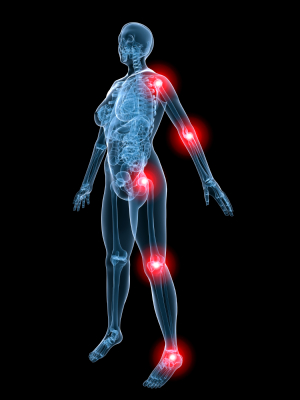When Jessica Alba woke up with a completely numb arm, she thought she’d suffered a stroke. But one trip to the ER and one CAT scan later, her doctors discovered the real culprit: carpal tunnel syndrome, a painful condition caused by compression of a nerve in the wrist. While you may associate the syndrome with arthritis-addled seniors, it’s actually incredibly common—and women are three times more susceptible to carpal tunnel syndrome than men, according to the National Institutes of Health.
 |
| Image Source: womenshealthmag.com |
What Is It?
When too much fluid fills the space inside your wrist—or the tendon inside it thickens due to age or overuse—the adjacent nerve is squeezed and your fingers lose sensation. Eventually, this prevents normal circulation in your arm, which means the pain and numbness can creep from your fingertips all the way to your upper arm and neck.
While these symptoms are definitely scary, they’re different from what you’d experience if you were having a stroke, says Steven Beldner, M.D., an orthopedic surgeon at Beth Israel Hand Surgery Center in New York City. In that case, you’re more likely to lose feeling in an entire limb.
You’ll know you have carpal tunnel syndrome because it always begins in the wrist, thumb, or one of your fingers—and it can only extend as far as your neck.
Risk Factors
Ever sleep in a strange position and wake up with tingling fingertips? That’s carpal tunnel syndrome. Most people experience brief bouts of the condition at least a few times in their lives, but there are certain circumstances that make some people more prone to it than others.
Abnormal levels of estrogen (common among pregnant, menopausal, or overweight women) are one of the leading causes of carpal tunnel syndrome—which is why your lack of a Y-chromosome makes you more likely to suffer from the condition.
And since the wrist tendon gets bigger and stronger the more you use it, doing activities like typing, knitting, or lifting weights too frequently also makes you more susceptible. (Alba blames her condition on the long hours she spends working on her new eco-friendly business, The Honest Company.)
Other people who have a higher carpal tunnel syndrome risk: those with small wrists, thyroid issues, arthritis, diabetes, or previous wrist injuries, Beldner says.
Treatment Options
An occasional case of the tingles is no reason to freak out: Just shake off numbness or boost circulation by making a fist, relaxing it, and repeating the cycle.
If you tend to lose sensation in your fingers a few times a week, anti-inflammatory meds, warm compresses, and wrist splints can help keep your carpal tunnels clear.
Make sure to see a doctor if you begin to lose control of your hand muscles, can’t feel your fingers no matter how much you move them, or feel like the pain is getting progressively worse. Depending on your condition, he or she may prescribe a cortisone injection or surgery.
To prevent a problem from happening in the first place, minimize activities that use your wrists, or wear wrist splints while you do them. Stretching helps, too: Just like a rubber band, your tendon gets smaller when it’s pulled, so stretching periodically can help release the tension in your carpal tunnels.
Carpal tunnel syndrome may occur in people with rheumatoid arthritis. Dr. Kinga Vereczkey-Porter is a rheumatology expert who can diagnose and treat carpal tunnel syndrome. Follow this blog for more discussions on health.
















